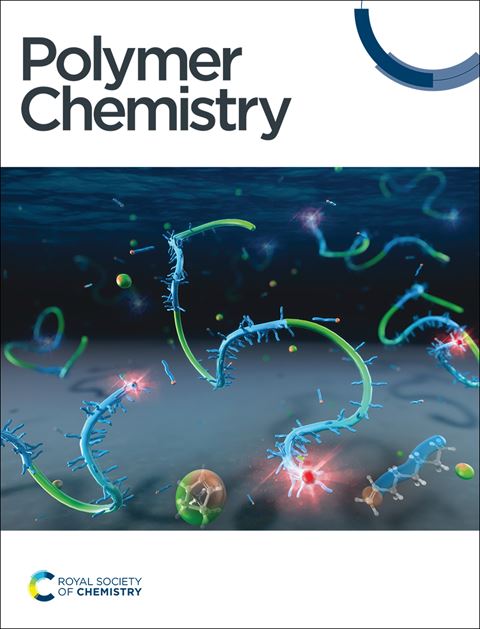光活性配合物使CF3自由基光控RAFT聚合
IF 4.1
2区 化学
Q2 POLYMER SCIENCE
引用次数: 0
摘要
光控可逆加成-破碎链转移聚合的最新进展主要集中在引发剂和链转移剂的发展上。在这项工作中,我们报告了一个光催化平台,使光控制丙烯酸酯基单体的RAFT聚合。该系统采用易于获取的n-杂环氮作为光催化剂,市售的CF₃SO₂Cl作为CF₃自由基源,二硫醚(三硫代碳酸盐)作为链转移剂。这种方法利用在n -杂环氮和CF₃SO₂Cl之间形成的光活性配合物来引发聚合,使聚合具有精确的摩尔质量控制和低分散性。本文章由计算机程序翻译,如有差异,请以英文原文为准。
Photoactive Complex Enabled Photo-controlled RAFT Polymerization with CF3 Radical
Recent advances in photo-controlled reversible addition-fragmentation chain-transfer (RAFT) polymerization have largely focused on the developments of initiators and chain-transfer agents. In this work, we report a photocatalytic platform enabling photo-controlled RAFT polymerization of acrylate-based monomers. The system employs readily accessible N-heterocyclic nitrenium as the photocatalyst, commercially available CF₃SO₂Cl as the CF₃ radical source, and a bis(trithiocarbonate) disulfide as the chain-transfer agent. This approach leverages a photoactive complex formed between the N-heterocyclic nitrenium and CF₃SO₂Cl to initiate polymerization, enabling polymerization with precise molar mass control and low dispersity.
求助全文
通过发布文献求助,成功后即可免费获取论文全文。
去求助
来源期刊

Polymer Chemistry
POLYMER SCIENCE-
CiteScore
8.60
自引率
8.70%
发文量
535
审稿时长
1.7 months
期刊介绍:
Polymer Chemistry welcomes submissions in all areas of polymer science that have a strong focus on macromolecular chemistry. Manuscripts may cover a broad range of fields, yet no direct application focus is required.
 求助内容:
求助内容: 应助结果提醒方式:
应助结果提醒方式:


